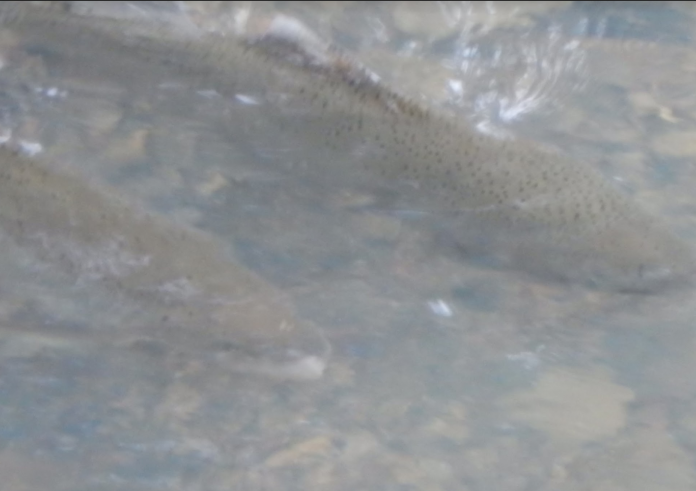Conservationists are cheering the first steelhead trout spawning run here since 2013.
“It’s very significant,” said Bob Brem, a founding board member of Coastal Habitat Education and Environmental Restoration, or CHEER.
He and colleagues, some of whom have fished local waters for more than half a century, worried that the prolonged absence of spawning steelhead could mean the entire native population in the Pajaro River Watershed had been wiped out.
When three or four generations of the species just never happen, “it can put a real dent in things,” Brem said.
And while they have only seen a handful of spawning steelhead so far, they are optimistic that there are many more they can’t see because recent storms have left the waterways so cloudy.
A scientific study he and Herman Garcia commissioned in the 1990s found not a single steelhead in the four-county watershed that empties into the Pacific at Monterey Bay, a devastating discovery that sent them scrambling for a reason.
Further study revealed that acid illegally dumped into one of the creeks from the agricultural industry had so thoroughly poisoned the water that it wiped out virtually all riparian wildlife and kept the steelhead away. Once legal action halted the dumping the fish returned almost immediately, according to Garcia, CHEER’s executive director.
But building their numbers back up to previous levels has always been a challenge, he said, because so many factors, both natural and man-made, can interfere with the fish’s life cycle.
Even now, although buoyed by the sightings this week of a half-dozen fish in the 25-inch range spawning and building nests in Dave’s Creek at the base of Uvas Dam, and expecting more, no one knows how big the run will be or how many of the hatch will survive to adulthood.
Since the last verified run in 2013, the fish faced severe drought conditions in 2014 and 2015, when, in order to preserve supplies, water officials drastically cut flows into the system from Uvas Reservoir.
As creeks dried up and the connections to the Pajaro River and ocean were lost, young and adult fish were trapped and died in evaporating pools.
“Then in 2016, last year, we had some Mother Nature issues. The creeks plugged up [with debris] from big storms,” he said, blocking the 40-mile migration to spawning grounds in the system’s tributaries for most steelhead.
“We actually had a couple of pairs that made it through and started spawning and laid their eggs,” Garcia recalled. “Then on March 5 and March 12 we had those two giant storms that came through and they blew out the nests.”
Volunteer crews from CHEER were ready to clear the 12 major plugs in the system, where dense mounds of tree trunks and limbs snarled the creek beds from bank to bank and made them impassable.
But rain-saturated land made access to the stream and riverbanks impossible in the winter of 2015-2016, so the cleanup was not undertaken until the summer of 2016—too late for the spawning run, according to Garcia.
“Two years of drought and then in 2016 the winter conditions created a situation that didn’t allow fish migration, then we spent the summer [of 2016] taking out those plugs so that fish could get in this winter and they came barreling in, so we got our fish back,” he said.
Steelhead trout are the same fish as the rainbow trout, but the latter spends its entire life in fresh water and the former live a major part of their lives in the Pacific. They look different as adults because of their different diets and environments.
Females can lay as many as 10,000 eggs in nests called redds, and, unlike salmon, which die after they spawn, both male and female steelhead return to the ocean and make annual spawning runs, sometimes more than once a year, during lifetimes that can last as many as a dozen or so years. They can grow to between 40 and 50 pounds.















